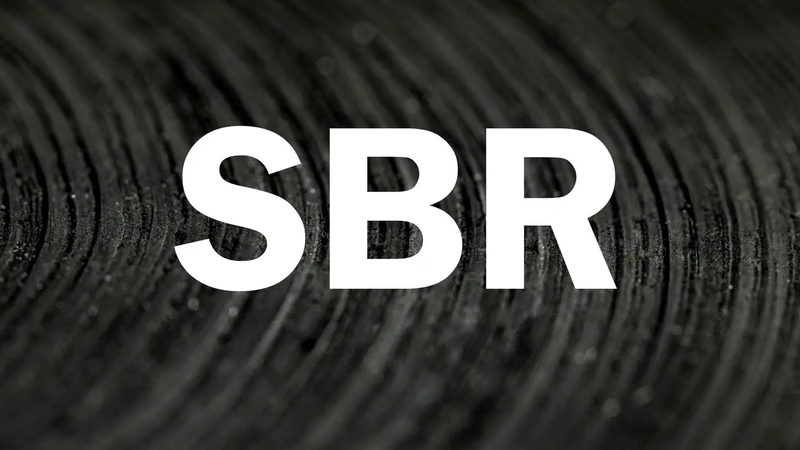
Styrene Butadiene Rubber in automotive and industrial applications.
The largest consumer industry of Styrene Butadiene Rubber (SBR) is the automotive industry, specifically the tire manufacturing sector. SBR is a key component in the production of automobile and truck tires, accounting for a significant portion of its overall consumption. Tire manufacturing requires rubber compounds with specific properties, including good abrasion resistance, high traction, and durability. SBR provides these desirable characteristics, making it an ideal material for tire treads. It enhances the wear resistance and grip of tires, ensuring better performance and safety on the road.
This type of polymer is known as a common polymer that has a high performance. Due to the cheap raw materials produced, this polymer material, which is also found in abundance, has made it the most widely used and widely used rubber throughout In fact, this polymeric material has the highest volume of production related to the rubber industry. Uses and applications of styrene butadiene rubber include making tires, shoes, rubber parts, sealants, adhesives, super-foam and foam products, pipes, BR-SBR conveyors, NR-SBR alloy gaskets. Styrene butadiene rubber as TPE thermoplastics Thermoplastic Elastomer, Rubber, Elastomer and Tire are used.
Consumption of 70% of styrene butadiene rubber produced in the tire industry is related to tire tread, 10% latex or leachate and 15% to mechanical parts. In fact, SBR, which was developed in Germany before World War II, but at the time World War II was widely used in Germany and the United States as a substitute for natural rubber, due to the monopoly of natural rubber by East Asia or Japan at the time. Styrene butadiene rubber has lower mechanical properties than NR and does not crystallize due to traction like NR. Therefore, it is weaker than natural rubber, even if reinforced with soot or other materials.
The automotive industry's demand for SBR is driven by the production of passenger vehicles, commercial trucks, and other vehicles that rely on rubber tires for traction and stability. As the automotive industry continues to grow worldwide, the consumption of SBR for tire manufacturing also increases. SBR is widely used in the production of shoe soles, heels, and other components of footwear. Its properties, such as abrasion resistance, flexibility, and resilience, make it suitable for manufacturing durable and comfortable footwear. SBR is utilized in the production of conveyor belts due to its excellent abrasion resistance and durability. It helps in providing strength and flexibility to the belts, enabling them to withstand heavy loads and resist wear and tear.
SBR-based adhesives are commonly used in various industries for bonding different materials together. SBR's adhesive properties, combined with its cost-effectiveness, make it a popular choice for a wide range of adhesive applications. SBR is used in various construction materials such as roofing membranes, flooring, sealants, and coatings. It provides enhanced durability, weather resistance, and flexibility to these products, making them suitable for construction applications. SBR is utilized in the production of industrial hoses and belts, where its properties like abrasion resistance, flexibility, and resilience are beneficial. These hoses and belts are used for carrying fluids, transmitting power, and conveying materials in industrial settings.
-
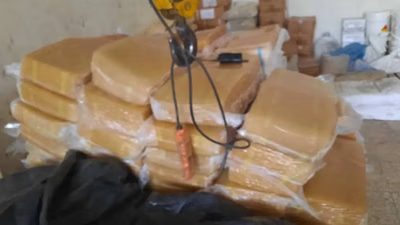
Styrene Butadiene Rubber (SBR) is a synthetic elastomer made from the copolymerization of styrene and butadiene. Its properties can be tailored by adjusting the ratio of these monomers, resulting in various grades suitable for diverse applications. SBR is known for its excellent abrasion resistance, flexibility, and resilience, making it ideal for industries requiring durable materials. The typical density of SBR ranges from 0. 92 to 0. 94 g/cm³, with hardness varying between 50 to 90 Shore A. Its tensile strength generally falls between 10 to 25 MPa, and it exhibits elongation at break from 300% to 800%. SBR maintains its mechanical properties even in low temperatures and offers moderate tear resistance.
While it has fair electrical insulation properties, it is not recommended for high-resistance applications. The versatility of SBR allows for modifications through additives and fillers to enhance specific characteristics like heat or oil resistance. This adaptability makes SBR a cost-effective alternative to natural rubber across various sectors.
-
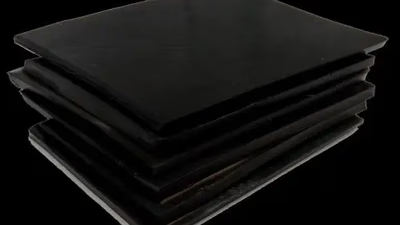
West Asia"s rich reserves of crude oil and natural gas provide a competitive edge in the production of Styrene Butadiene Rubber (SBR). The region boasts a well-established petrochemical industry, supported by significant investments in infrastructure and production facilities. Key players like SABIC, NPC, Petro Rabigh, IBR, and GPIC dominate the SBR market, leveraging local resources to cater to both domestic and international demands. Governments in West Asia recognize the economic significance of this sector and offer incentives to stimulate growth, including tax benefits and infrastructure development. This strategic support has led to the establishment of numerous SBR manufacturing facilities aimed at diversifying product portfolios beyond crude oil exports. The geographical advantage of West Asia facilitates efficient logistics for exporting SBR to major markets across Asia, Europe, and Africa. As global demand for synthetic rubbers rises—driven by industries such as automotive and construction—West Asia is positioned as a crucial supplier. The region not only meets local needs but also serves as a vital hub for international trade in SBR. "
-
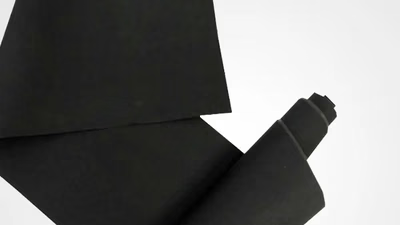
Natural rubber and styrene butadiene rubber (SBR) differ significantly in origin and properties. Natural rubber is sourced from the sap of the Hevea brasiliensis tree, making it a renewable resource, while SBR is a synthetic product derived from petroleum through polymerization. Both materials are elastomers, exhibiting flexibility and the ability to return to their original shape after deformation. However, SBR can be processed more easily and has superior heat resistance compared to natural rubber. The cost-effectiveness of SBR makes it a popular choice in various industries, including automotive and construction. Natural rubber excels in elasticity and resilience, making it ideal for high-performance applications like tires and seals. Both types can be modified with fillers and additives to enhance specific properties such as abrasion resistance and tear strength. Environmental implications also differ; natural rubber is more sustainable due to its renewable nature, while SBR"s production has a higher environmental impact.
Ultimately, the choice between natural rubber and SBR depends on the specific requirements of the application, including performance needs, cost considerations, and environmental factors. "
-

The automotive industry, particularly tire manufacturing, is the largest consumer of Styrene Butadiene Rubber (SBR), utilizing it for its essential properties such as abrasion resistance and durability. SBR is crucial in producing tires, accounting for approximately 70% of its consumption. This polymer enhances tire performance by providing better grip and wear resistance, ensuring safety on the road. Beyond tires, SBR is also used in various applications including footwear, conveyor belts, adhesives, and construction materials due to its flexibility and resilience. The demand for SBR is closely linked to the growth of the automotive sector globally, as it supports the production of passenger vehicles and commercial trucks. Despite having lower mechanical properties compared to natural rubber (NR), SBR"s cost-effectiveness and availability make it a preferred choice in many industries. Its versatility allows it to be utilized in products ranging from shoe soles to industrial hoses, highlighting its significance in both consumer and industrial markets. "
-
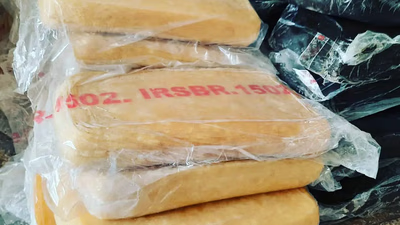
SBR (Styrene Butadiene Rubber) requires careful handling during transportation and storage to maintain its quality. It is typically transported in bulk containers, such as bags or drums, and should be protected from moisture, contamination, and physical damage. Ideal storage conditions include a clean, dry environment with temperatures below 25°C (77°F) to prevent degradation. Proper ventilation is essential to avoid mold growth, while exposure to direct sunlight and extreme temperatures must be minimized. During loading and unloading, care should be taken to prevent spills or damage. SBR should be stored away from reactive substances like acids and oils to avoid contamination. Implementing an inventory management system that follows the FIFO principle helps ensure older stock is used first. Regular inspections are necessary to monitor for signs of degradation or damage.
Compliance with local regulations regarding the transportation and storage of SBR is crucial for risk management. Petroleum traders can expand their offerings by including SBR in their product portfolio, catering to a wider customer base while ensuring safe logistics practices are followed.
-

SBR, or Styrene Butadiene Rubber, is a synthetic rubber known for its versatility and cost-effectiveness. By adjusting the styrene-to-butadiene ratio and incorporating various additives, SBR can be tailored to meet specific application needs across diverse industries. Its favorable properties include good tensile strength, flexibility at varying temperatures, and resistance to abrasion, making it suitable for applications in tire manufacturing, footwear, and construction materials. SBR is also relatively inexpensive due to the availability of its raw materials. However, it has limitations such as low resistance to hydrocarbon solvents and certain environmental factors. Safety precautions are necessary when handling SBR to avoid skin contact and inhalation of dust. Despite these disadvantages, SBR"s compliance with regulatory standards enhances its appeal in global markets. The ability to customize SBR"s properties allows businesses in the Middle East and West Asia to leverage this material effectively within their supply chains.






